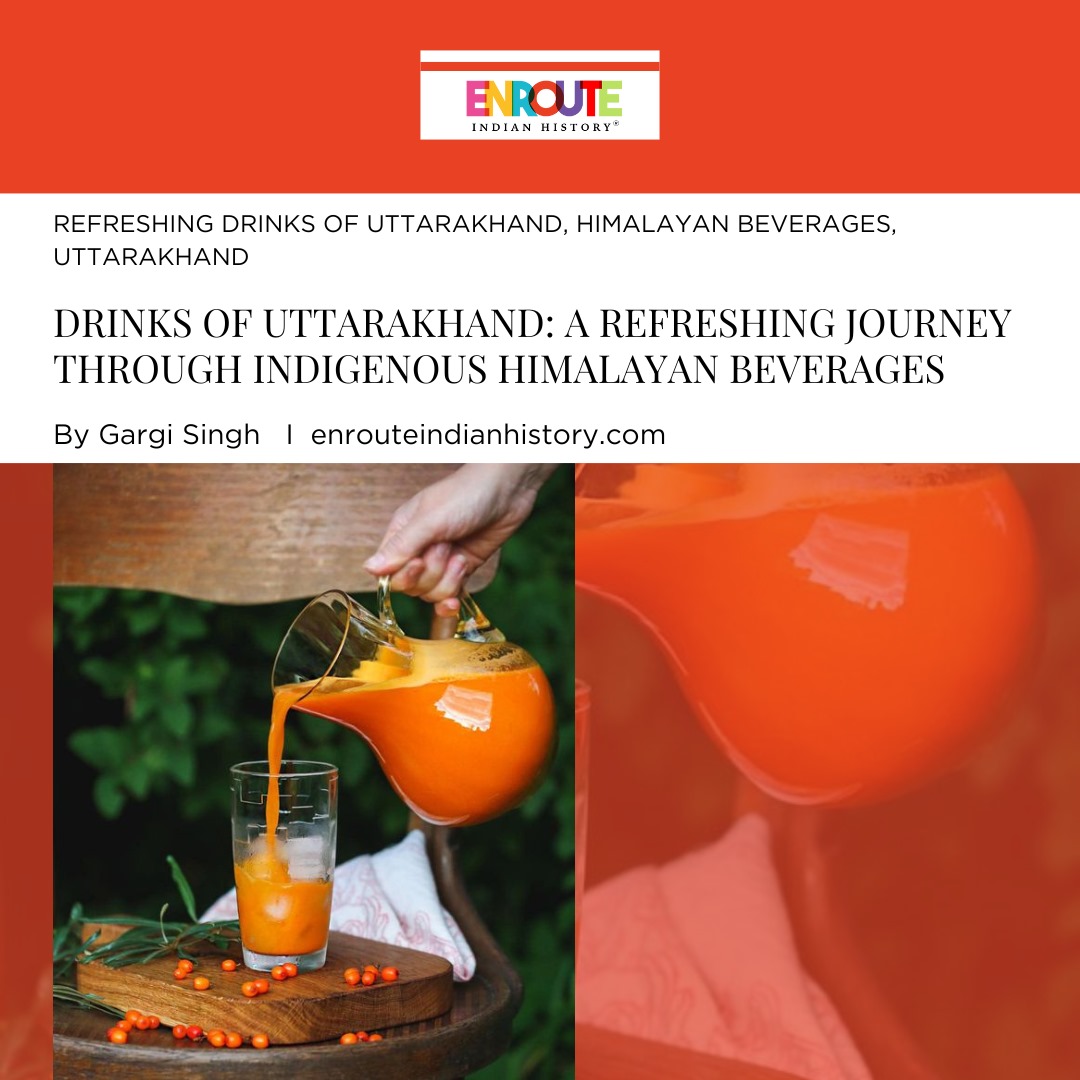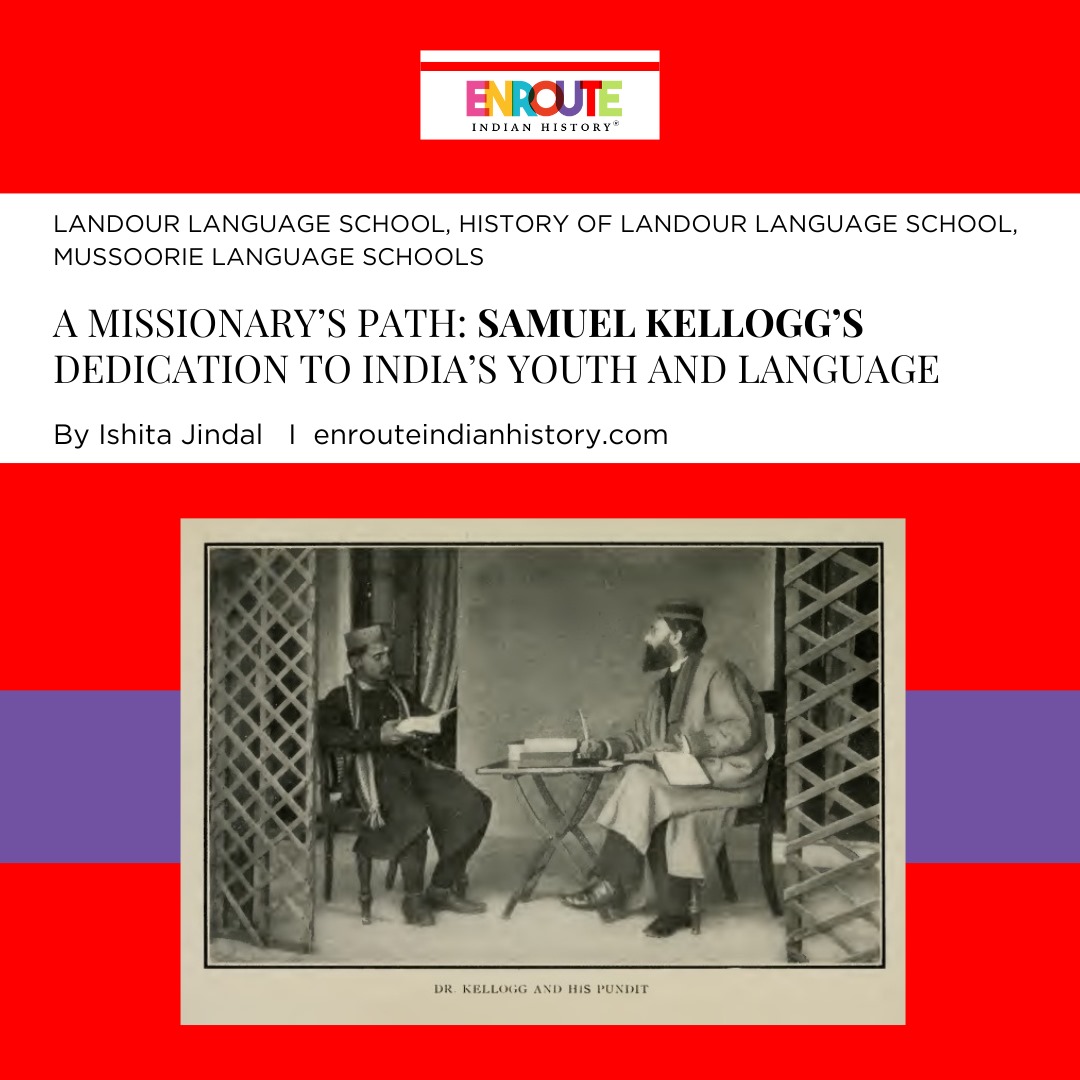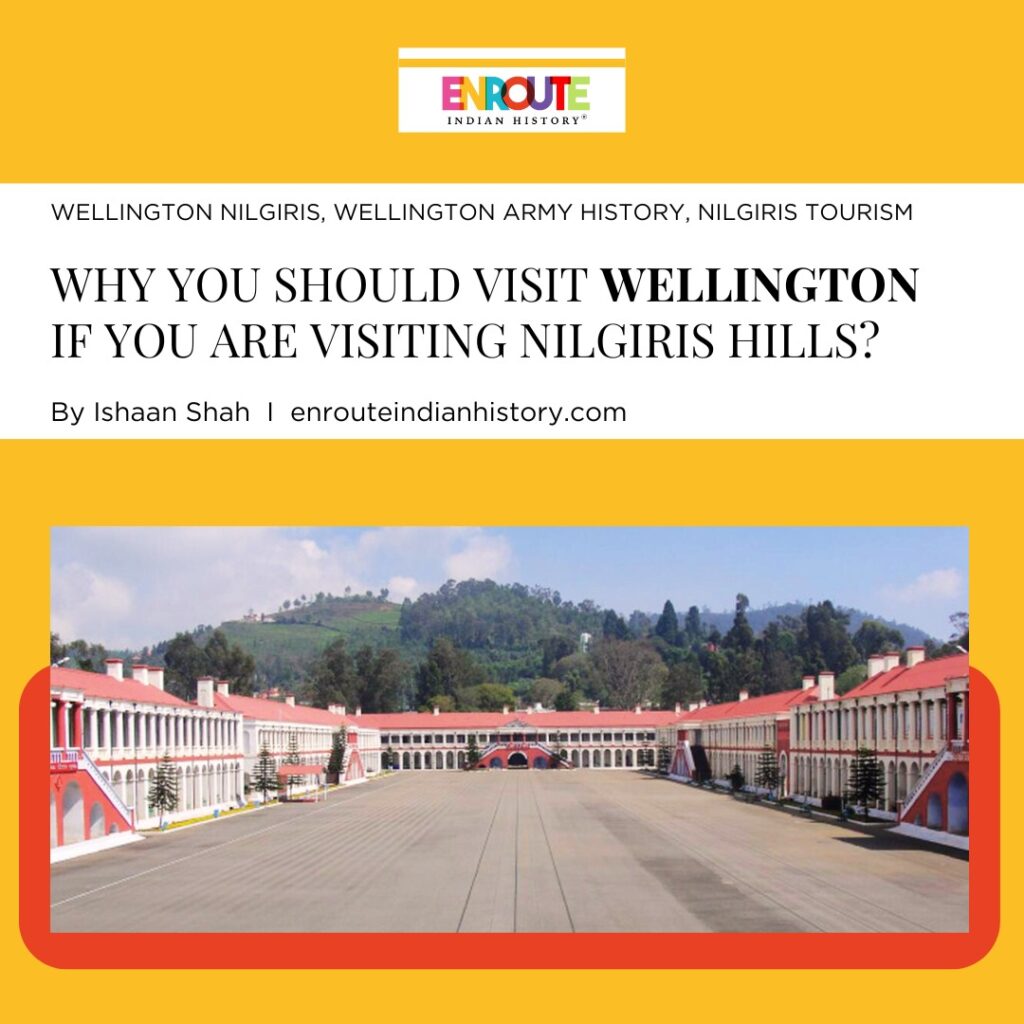
The pleasant Wellington hill town in Tamil Nadu is well known but it is not to be confused with the capital of New Zealand. Famous for its military heritage and tea estates, the town is tucked serenely in the Nilgiris between the well-known hill stations of Southern India, Ooty and Coonoor. If one would like to revitalise themselves and escape the scorching heat of the urban areas,they should consider visiting this Nilgiri hill town, Wellington, that offers tranquillity and peace in every breath!
Wellington is a pretty hill town nestled in the Nilgiris. The name seems very interesting to a town in India. It was suggested by the British to serve their military interests and has remained ever since.The name and the aura of the place teleport one to a bygone colonial era when the British stationed their barracks here at Wellington. It is a cantonment now, boasting proudly of its military history and heritage. The Defence Services Staff College is one of the few colleges to provide training in all three services- Navy, Army, and Air Force. The oldest regiment of the Indian Army, the Madras Regimental Centre or MRC is located here in Wellington. Moreover, the Wellington Gymkhana was also established here in the mid-19th century to offer recreation to the army troops stationed here. These three prominent landmarks are noteworthy and without doubt, form the crux of the army heritage of the town. Moreover, the climate of the town and its remarkable geography as the Nilgiris hill town is eligible to crop up in your summer plans. Additionally, the Nilgiris Railways also passes through this little town that holds special significance for the Indian Army.
WHY ‘WELLINGTON’ AND OTHER ASPECTS OF THE NILGIRI TOWN
The name of this Indian town is indeed very riveting and so is its history. Until the mid to late nineteenth century, the name of this place was not Wellington. It was known then as ‘Jakkatalla’ from the name of a northern village called ‘Badaga’. The Iron Duke of Wellington, Sir Arthur Wellesley, expressed his agreement for a military sanatorium tucked in the Nilgiris. The name ‘Wellington’ was suggested by Sir Richard Armstrong, however, Sir Henry Pottinger firmly thought the name, so British, would be of no use and meaning to the native Indians residing here. Finally, in 1860, it was the conclusive decision taken by Sir Charles Trevelyan who held that the name ‘Wellington’ was more suitable for this military establishment and since then, the name has been synonymous with its residents. This military establishment derived its nature a few years ago when this Nilgiri hill town became a cantonment for the military in 1854 and since then, Wellington has been known for its erstwhile colonial barracks and now, for the Madras Regimental Centre.
As for its geography and climate, the yearly temperature of this Nilgiri hill town swings from 3-30 degrees Celsius. Wellington Hill Town receives southwestern monsoon rainfall from June to mid-August and the northeastern monsoon rainfall from October to November. 300 cm forms the mean yearly rainfall of Wellington, Nilgiris. Therefore, the weather of Wellington hill town is salubrious or pleasant almost throughout the year and forms an ideal trip to, in extreme summers.

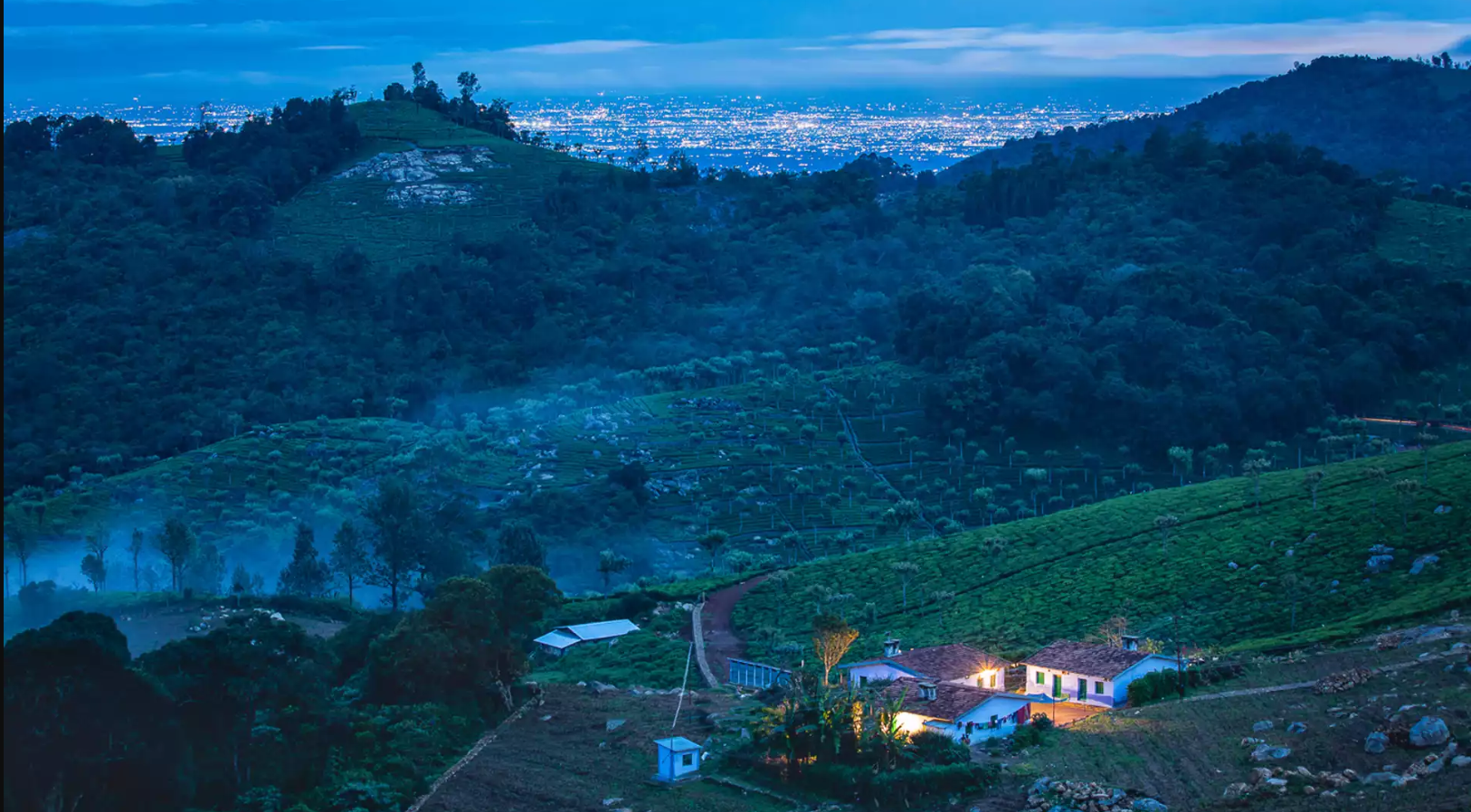
[Sources (L-R)- DSSC, Wellington of yesteryears, Tamil Nadu Tourism, Nilgiri Mountains)
The Nilgiris are spread over 3 states- Kerala, Karnataka, and Tamil Nadu. The word means ‘blue mountains’ attributed to the prevalence of the Strobilanthes flower that occupies the terrain.
From a sociological point of view, the Nilgiri district is home to the tribal communities- Todas and the Badagas. The former lives in thatched houses with a wooden framework and an arched roof, that are spread across the pasture slopes. Their religious beliefs revolve around the buffalo (the water buffalo- bubalus bubalis)- and all rituals are performed for almost all activities related to dairy and dairy products. The latter- the Badagas are believed to have come into the Nilgiris from the north, attributing to its name, probably due to economic reasons. They are essentially agriculturalists who grow grains and vegetables like potatoes. These two communities engage in a barter system. The Todas exchange their dairy products along with various bamboo articles with the grain and cloth of the Badagas. It is certainly novel that this system governs their economic life.
WELLINGTON HERITAGE SITE- THE FIRST BARRACKS AND MADRAS REGIMENTAL CENTRE
After acquainting with some basics, it is necessary to learn about its heritage sites- well, they are not from an archaeological point of view but these are landmarks that define the popularity of Nilgiri hill town. The military history of this town is certainly rich and replete with stories and achievements of valour and determination
The stationing of British barracks here at Wellington began in 1854 however the decision was a long one. Initial objections were related to fears that the armies would contract malaria when marching through the jungles of Mysore. In fact the present Ooty Gymkhana Club was called the ABC Club- Asthma, Bronchitis and Cough! Well, it was ABC, undoubtedly but it was Archery, Badminton, and Croquet. Well, initial efforts to mitigate the impact of these diseases were made by erecting temporary buildings. Fortunately, the favourable efforts of Sir Thomas Munro and his visits as the Governor of Madras in 1825 and 1826 and the sanctioning of a hospital in Ootacamund for invalid soldiers and other works was a welcoming move. The matter of stationing troops here was brought to the forefront of the Medical Board by Dr Baikie in 1832. Successive efforts to station a regiment by Lord Elphinstone and by Marquis of Tweed Dale were in vain. The present site was suggested by Major Ouchterlony and it was officially approved in 1847. It got further delayed as for some reason the work wasn’t carried on. Finally, plans were drawn up for stationing the permanent barracks in 1849 and were officially approved in the 1850s, and construction of these barracks started. The 74th Highlanders were the first regiment to be moved to the Wellington barracks in March 1854. The construction was complete in 1860 and almost all regiments of the British were stationed here in the Nilgiri hill town. And, the colonial military history of this regiment with the Second Battalion of Worcestershire being the last regiment to be stationed in 1942 in pre-independent India.
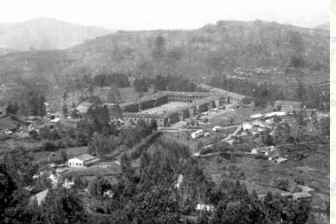
(Source- DSSC, Wellington Barracks)
Forming the centre stage of Wellington army history, the history of the Madras Regimental Centre is a long but a fascinating one. Its roots can be traced to the 26th Madras Infantry which was later named The Training Centre. This battalion was formed in Tanjore in 1794 as the 36th Madras Battalion. One more Training Centre was established in Madukarni in the year 1942. The Ballari Training Unit’s regiment, the 3rd Battalion was a special one to assist produce Viceroy’s Commissioned Officers or V.C.O. The original colours of the 3rd Madras Regiment were brought from Fort Saint George, Madras, and were presented to the training centre at Madukarni in 1912. Post-independence, it was redesignated as the Madras Regimental Centre which was moved to the Wellington Barracks in 1947. It is now renamed as ‘Srinagesh Barracks’ after the first Indian Colonel of the regiment- Gen. S.M Srinagesh. The Record Office which was established for the maintenance and upkeep of documents of the regimental personnel, was also moved to this Wellington hill town.

(Source-The Hindu, Madras Regimental Centre)
The barracks architecture is a mixed blend of Napoleonic and Prussian styles. However, going back, the fall of Madras town to the French in 1746 was a turning point in Anglo-French relations for the control of more resources and land in then India. Helpless, the Madras Government began the recruitment of troops with a proper footing after French efforts to besiege Madras. The troops were gradually disciplined with their continuous interaction with European soldiers and soon proved their mettle as soldiers and the then Major Stringer Lawrence praised them highly. Gradually, in the context of the Battle of Plassey in 1757 with an impending threat to Madras, the number of troops increased. In 1758, the first two battalions were formed- A battalion in the north as Sircar Battalion, and those in the south, as Carnatic Battalion but in 1784, concerning all the units the name was reverted to Madras Battalions.
The most famous battle of pre-independence was the Second Anglo-Maratha War in 1803 at Assaye, where the Duke of Wellington, Sir Arthur Wellesley led the soldiers into victory who fought valiantly. With ‘Namaskaram’ as their salutation, the post-independence tally of battle and honours bestowed upon the regiment is astonishing and it has been the ‘Best Marching Contingent’ at the Republic Day parade more than once.
WELLINGTON HERITAGE SITES- DEFENCE SERVICES STAFF COLLEGE AND THE WELLINGTON GYMKHANA CLUB
There are other two important landmarks in this town that form an integral part of its military heritage.
Established in 1947, the Defence Services Staff College in Wellington today has earned a reputation globally and has won laurels for its excellence. It’s an institution that imparts training to officers of the Army, Navy, and Air Force- one of the few of its kind of institutions in the whole world to do so! The story of how the college ends up in the Wellington hill town, is certainly an interesting one.
Its roots can be traced to 1905 when the institution was initially established in Devlali, Maharashtra. It was then shifted to Quetta, now Pakistan, in 1907. It was when Col SD Verma shifted to Wellington in 1947 that the Nilgiri hill town was selected as a temporary place for the institution. As for education, the 1st Interim Staff Course of a duration of 20 weeks was held from April 1948 with Army officers 46, 2 Navy, and 2 Air Force student officers. The same syllabus was followed for the Navy and the Air Force as the Army followed. Furthermore, the Air Wing was established in the institution in 1949. It was in this year that the temporary status was shifted to permanent one after a long-drawn process between the college, Army Headquarters, and the Ministry of Defence. A Naval Wing was established in 1950. Its concept was fully implemented for all three Services. And was it only Indian students who studied here? Well, no. In 1988, students from the USSR, USA, Canada, UK, and West Germany also attended the courses from this college. It was then followed subsequently by students joining from Italy, Australia, and Namibia as well.

(Source- DSSC Website, Defence Services Staff College)
The college also boasts of a rich alumnus and just to name a few- HE Olusegun Obasanjo who was the President of Nigeria from 1999-2007; HE Sitiveni Rabuka who was the President of Fiji from 1992-1999 and HE Gotabaya Rajapaksa who was the President of Sri Lanka from 2019-2022. Over time, the college saw more students joining from other countries and its infrastructure expanding.
Certainly, the military needs relaxation and the Wellington Gymkhana Club was offering such services. It is amongst the oldest of its kind in the country and was set up in 1873 to offer services in recreation and relaxation to the Wellington garrison. It boasts perhaps the prettiest 18-hole Hill Golf Course, nestled uncompromisingly in the Nilgiris at an altitude of almost 6000 feet above Mean Sea Level. After this hill town was made a British barrack, the idea of recreation for their armies was not overlooked. A brick cricket pavilion was made in 1873 to suit the purpose. This was not the actual year of finding as the name was officially adopted in 1916. The Todas were residents of this site and were relocated to Rhalia where still a few families survive. A Race Course functioned for some time before an expanded track at Ooty cropped up, whose remains are still visible today. By the 1930s, it had a nine-hole golf course with facilities for sports such as cricket, rugby, and polo. It was later opened to civilians. The first Indian member of this club, Col. Rajkumar Devraj Urs joined in 1943. Post-independence, Maj Gen W.D.A Lentaigne, who was the first Commandant and later Maj Gen S.H.F.J Manekshaw ensured that this Club grew and prospered.
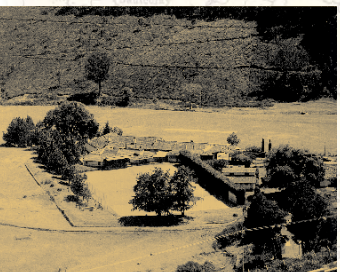
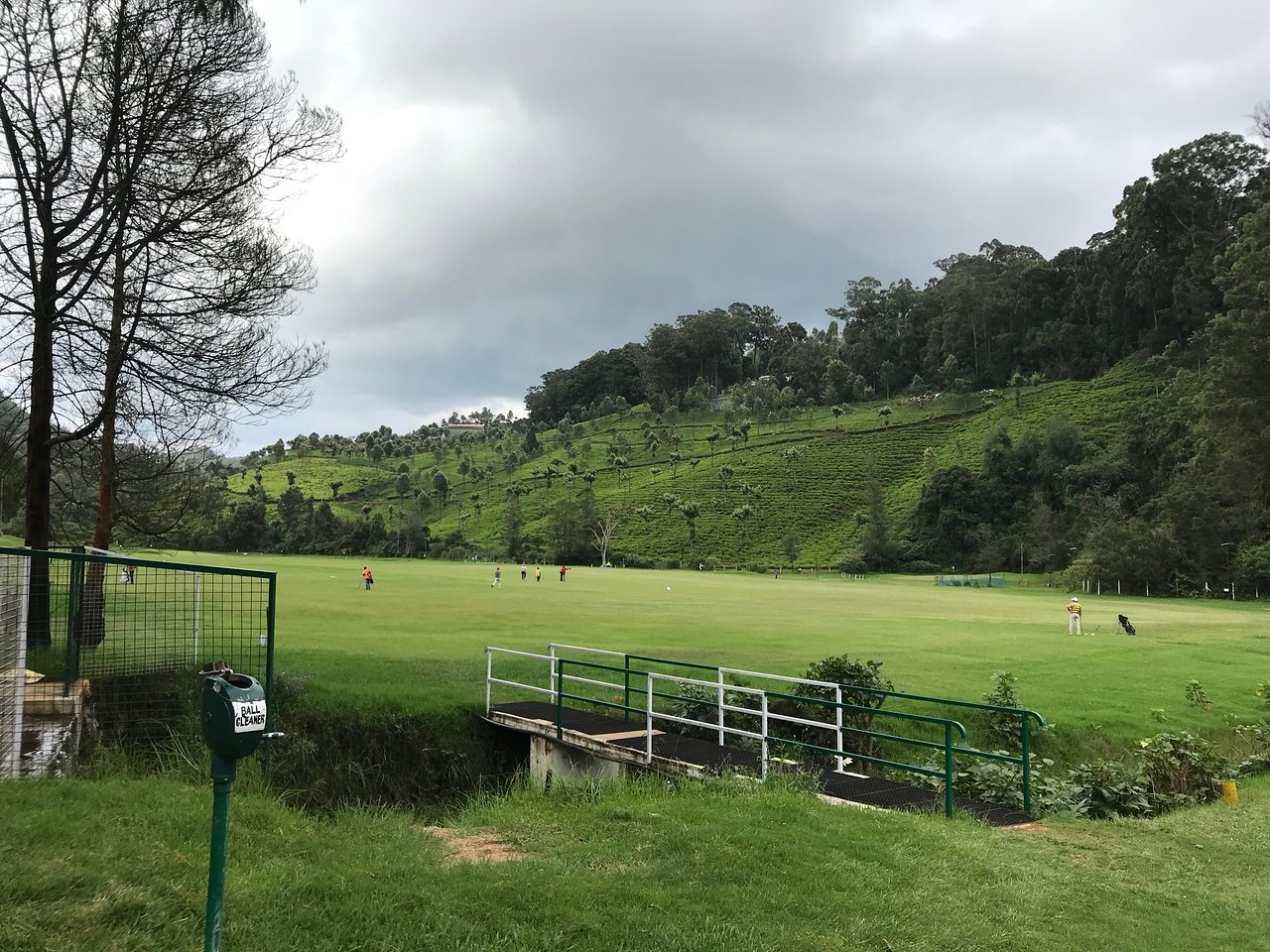
[Source(L-R)-DSSC, Wellington Gymkhana Then, TripAdvisor, Wellington Gymkhana Now]
WHAT TO DO IN WELLINGTON?-NILGIRIS TOURISM
After learning about the three most important landmarks of his Nilgiris hill town, this hill town has a lot to offer for tourism.
One of the most important and the most enjoyable parts of a future trip to Wellington would be sitting and experiencing a ride on the Nilgiri Mountain Railway! It’s the best way to escape the worries of daily life and enjoy the breathtaking views of the Nilgiris on a train ride. It is nicknamed the ‘Toy Train’ as it is popular amongst kids. The railway line is 1000 mm long and the train slowly ascends, giving one a chance to revitalise in the lap of nature, going through tunnels and some sharp edges. It takes 5 hours to reach Ooty with a distance of about 46 km. It was built by the British in 1908 after 45 years of continuous negotiations to build this mountain railway, with the initial decision taken in 1854. The train begins its journey from Mettupalayam and ends in Ooty. It passes through several hill stations such as Coonoor, Wellington, and Fern Hill. It’s so special since it was declared as a World Heritage Site by UNESCO in 2005! It has since formed an integral part of the heritage of mountain railways, in extension to the Darjeeling Himalayan Railway.
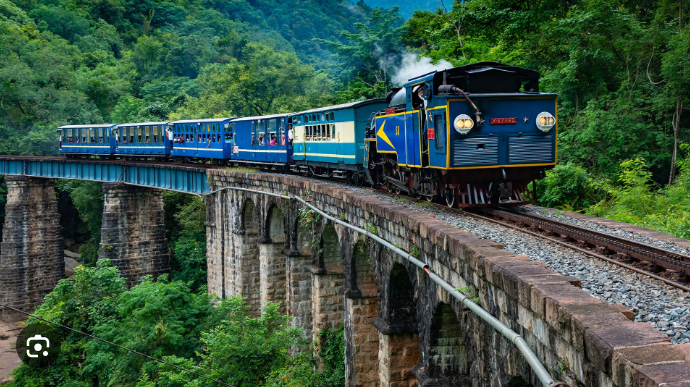
(Source- Tamil Nadu Tourism, Nilgiri Mountain Railway)
In addition, the Madras Regiment Museum is an effort to pay tribute to the rich history of the regiment and its contribution to war-related and peacekeeping activities. One can click as many pictures as one wants around the building, as mobiles and cameras are not allowed inside. They also uphold a very interesting facility here- which is a mock bunker. Where one can enter it and wear the real uniform of the regiment and take pride in holding a real gun.
Getting back to the DSSC, there is a War Memorial across its gate which pays tribute to the martyrs of the regiments who fought for the country in various wars and battles.
In addition to this, there is a post office. It is a century-old post office! In the age of Whatsapp and emails, the tradition of writing letters is alive in this Nilgiri hill town!
And, then there’s a lake- the Wellington Lake, maintained by the Cantonment Board of the hill town. If one wants to spend some picnic time with your friends or family, then one shouldn’t miss visiting this place! It is home to various species of birds and trout fish. It is blooming with flowers and boating can be done here as well that can expose some unusual fauna like a small water snake! There is also a musical fountain show, in its way, that one can enjoy in the evenings. There is one more heritage structure, which is the Maneskshaw Bridge, whose origins can be traced to the year 1878. It was the Waterloo Bridge then, first constructed over the Mynala River. It was also commonly called the Black Bridge since it used Burmese teak and painted black to construct the bridge.
To reach this town, one can catch a bus from Coonoor to Wellington that would only take 15 mins to reach Wellington or get into a private taxi. The nearest airport is Coimbatore (75 kms). But the best option is to enjoy the Nilgiri Mountain Railway or the Toy Train to experience the stunning views of the ever-gorgeous Nilgiris welcoming one in their laps!
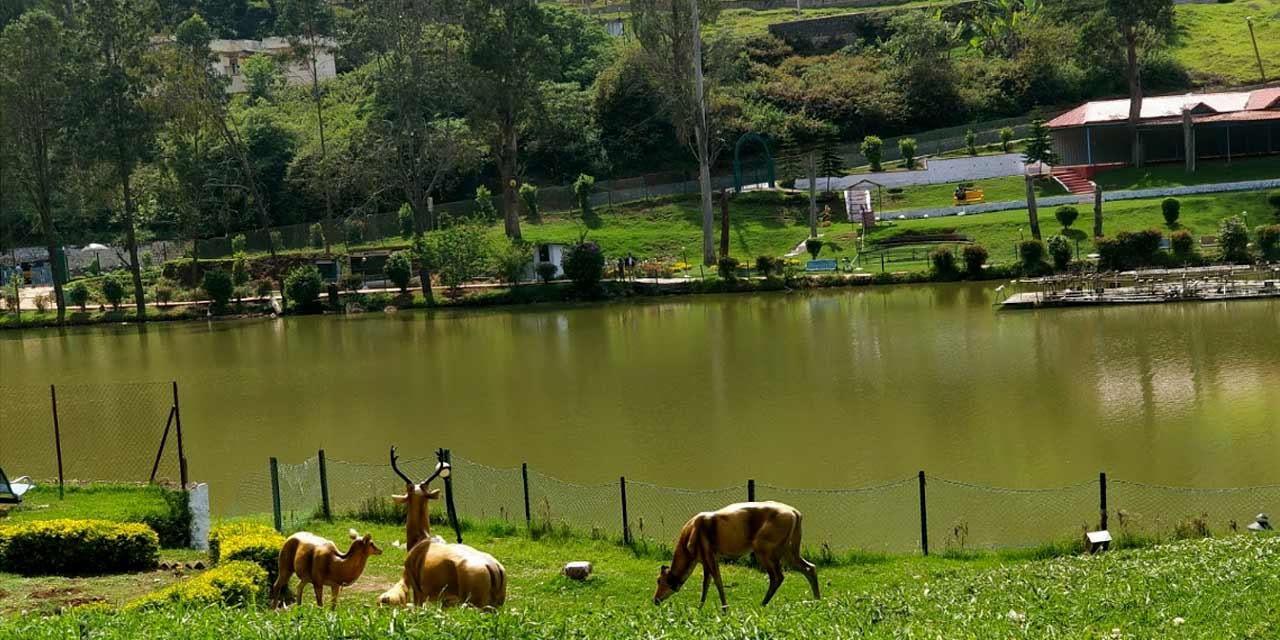
(Source- Ooty Tourism, Wellington Lake)
Tamil Nadu’s Wellington surely offers a promising journey to its visitors and, there are no further reasons to be put forth for not visiting this beautiful little hill town with such a soothing landscape and where calmness meets tranquillity and serenity with every step! If one plans to visit Ooty or Coonoor, it is ideal to visit this Nilgiri hill town that makes one forget the daily hassles of urban life and enables one to rewind and revitalise oneself owing to the calmness of this town. This calmness would in turn evoke inner calmness and peace and is a perfect destination for self-learning, self-discovery and meditation. One should feel proud of learning about its rich military past and the achievements of the regiment of so many decades as well and it makes it ideal for one to go to Wellington in scorching summers!
REFERENCES AND BIBLIOGRAPHY
Tamil Nadu Tourism
https://www.tamilnadutourism.tn.gov.in/destinations/the-nilgiris-district
‘History of Wellington’, Defence Services Staff College
https://www.dssc.gov.in/history/Wellington%20Of%20Yesteryears.pdf
Wellington Cantonment
https://wellington.cantt.gov.in/history/
The Travel Curry (2023), ‘Things to do in Wellington, Tamil Nadu’
https://thetravelcurry.com/things-to-do-in-wellington-tamil-nadu/
Wellington Gymkhana Club
https://wellingtongymkhanaclub.co.in/history/
About Wellington
https://wellington.tamilnaduonline.in/city-guide/about-wellington
Defence Services Staff College Website
Toda Tribe
https://www.britannica.com/topic/Toda-people-India
Badaga Tribe
https://www.britannica.com/topic/Badaga
Madras Regiment History- Lt. Col Jitendra Kumar, The Black Pom Bom (A Short History of the Madras Regiment)-1758-1972
http://madrasregiment.org/history.htm
Mehta A(2022), ‘The legacy of truly martial Wellington’
https://www.dailypioneer.com/2022/columnists/the-legacy-of-truly-martial-wellington.html
Tamil Nadu Tourism, Nilgiri Mountain Railway
https://www.tamilnadutourism.tn.gov.in/destinations/the-nilgiri-mountain-railway
IMAGE REFERENCES
Krishnaswamy M.(2012) ‘Heroes from the hills’, The Hindu
https://www.thehindu.com/features/kids/heroes-from-the-hills/article3906763.ece
Wellington Gymkhana Club, Tripadvisor
Ooty Tourism
https://ootytourism.co.in/wellington-lake-coonoor
Whistling Hound- ‘Wellington In Nilgiris Is A Quiet Slip Tucked Between Ooty & Coonoor’
https://whistlinghound.com/2018/12/25/things-to-do-in-wellington-in-ooty-coonoor/


